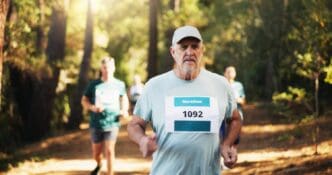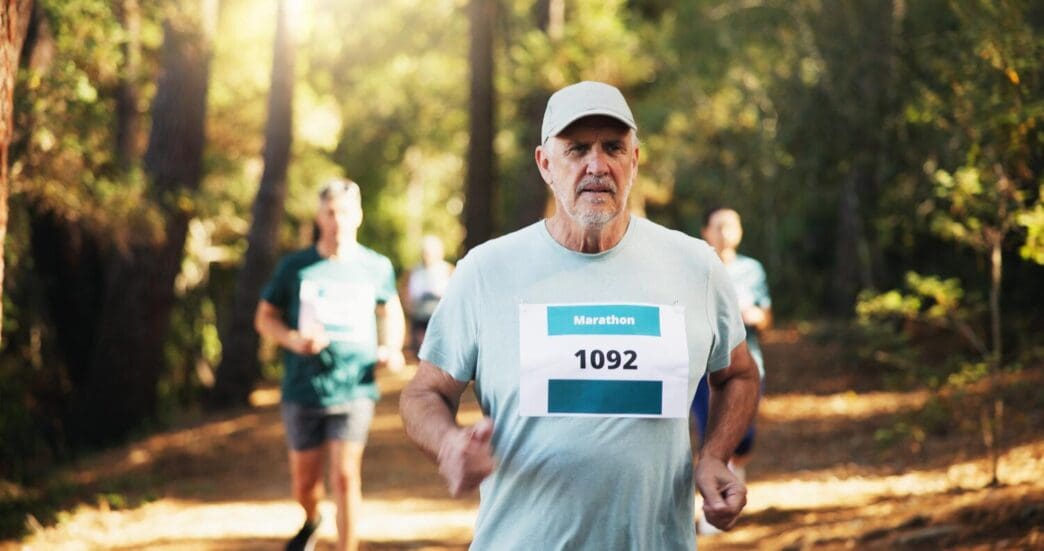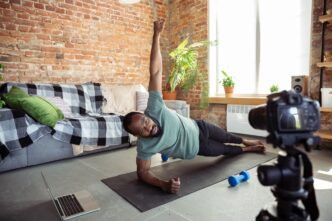A Quick Takeaway
The Story Behind the Trend
How to Make It Work for You
The Community View
For Miami’s dedicated running community, maintaining robust bone health as the years progress is paramount to sustaining a long, active lifestyle on and off the pavement. As runners age, bone density naturally declines, a process that can be mitigated through strategic nutritional intake, varied exercise routines, and smart lifestyle choices tailored to the unique South Florida environment. Understanding the intricate relationship between running, aging, and skeletal integrity is key for anyone who wants to continue pounding the tropical trails and scenic routes, ensuring their bones remain strong and resilient for decades to come.
The Unseen Foundation: Why Bone Health Matters for Aging Runners
Bones are living tissues, constantly undergoing a process called remodeling, where old bone is broken down and new bone is formed. This dynamic process is crucial for adapting to stress and repairing micro-damage, but after peak bone mass is reached in early adulthood, the balance can shift, with breakdown potentially outpacing formation.
For runners, especially as they age, this means that while running is a fantastic weight-bearing exercise that stimulates bone growth, it’s not a complete shield against age-related bone loss. Factors like hormonal changes, nutritional deficiencies, and even chronic inflammation can accelerate this decline, increasing the risk of stress fractures and osteoporosis.
A proactive approach is essential to ensure that the skeletal system can continue to support the high-impact demands of running, allowing individuals to enjoy their passion without debilitating injuries. Strong bones are not just about preventing fractures; they are fundamental to maintaining mobility, balance, and overall quality of life.
Miami’s Unique Climate: Challenges and Opportunities for Bone Strength
Running in Miami presents both distinct advantages and challenges for bone health. The abundant sunshine offers ample opportunity for Vitamin D synthesis, a critical nutrient for calcium absorption and bone mineralization.
However, the intense heat and humidity demand careful attention to hydration and electrolyte balance, which indirectly impact bone health by affecting overall physiological function and recovery. Runners must also be mindful of sun exposure times to avoid skin damage while still optimizing Vitamin D production.
The generally flat terrain around Miami might also mean less varied impact stress compared to hillier regions, potentially requiring runners to seek out alternative ways to challenge their bones through cross-training or varied running surfaces. The year-round outdoor lifestyle, however, encourages consistent activity, which is a major boon for bone density.
Pillars of Bone Strength for the Enduring Runner
Targeted Nutrition: Fueling Your Skeleton
What you eat plays a foundational role in bone health, providing the raw materials for bone remodeling and strength. For aging runners, a diet rich in specific micronutrients is non-negotiable.
Calcium: More Than Just Dairy
Calcium is the primary mineral component of bone, providing its structural rigidity. Aim for 1,000-1,200 mg per day for adults over 50, but remember that dairy isn’t the only source.
Leafy green vegetables like kale and collard greens, fortified plant milks, tofu, sardines, and almonds are excellent non-dairy options. Spreading calcium intake throughout the day improves absorption, as the body can only absorb so much at once.
Vitamin D: The Sunshine Vitamin, Safely Sourced
Vitamin D is crucial for calcium absorption and plays a direct role in bone mineralization. While Miami offers plenty of sun, factors like sunscreen use, skin tone, and age can affect synthesis.
Aim for safe sun exposure during non-peak hours (e.g., before 10 AM or after 4 PM) for 15-20 minutes, several times a week, exposing arms and legs. Dietary sources include fatty fish (salmon, mackerel), fortified foods, and egg yolks, but supplementation is often necessary for optimal levels, especially for those who consistently use sunscreen or limit sun exposure.
Magnesium and Vitamin K2: The Unsung Heroes
Magnesium is involved in over 300 biochemical reactions, including bone formation and Vitamin D activation. Good sources include nuts, seeds, legumes, whole grains, and dark leafy greens.
Vitamin K2 directs calcium to the bones and teeth, preventing its accumulation in soft tissues like arteries. Fermented foods, certain cheeses, and grass-fed butter are good sources, and it’s often overlooked in standard diets.
Protein: The Matrix Builder
Protein forms the organic matrix of bone, providing the framework upon which minerals are deposited. Adequate protein intake is vital for bone density and strength, especially as muscle mass naturally declines with age.
Runners should aim for 1.2-1.7 grams of protein per kilogram of body weight daily, sourced from lean meats, poultry, fish, eggs, legumes, and dairy. This supports not only bone health but also muscle repair and recovery, which are critical for injury prevention.
Smart Movement: Beyond the Pavement
While running itself is a powerful bone-building activity, a holistic approach to movement is necessary to maximize skeletal strength and minimize injury risk.
Varied Impact: The Bone-Building Benefit of Running
Running provides beneficial impact stress that stimulates osteoblasts (bone-building cells). However, consistently running on the same flat, hard surfaces might not offer the diverse loading patterns that truly optimize bone density.
Incorporate varied surfaces like grass, trails, or even sand (with caution) into your routine to provide different types of impact. Short bursts of faster running or hill repeats can also offer greater bone-stimulating forces than steady-state efforts.
Strength Training: Resistance for Resilience
Resistance training is arguably the most effective non-impact way to build and maintain bone density, particularly in the hips and spine. Exercises that load the skeleton, such as squats, deadlifts, lunges, and overhead presses, are invaluable.
Aim for 2-3 strength training sessions per week, focusing on compound movements that work multiple muscle groups. This not only strengthens bones but also builds muscle mass, improving balance and reducing fall risk.
Cross-Training: Balance and Support
Activities like cycling, swimming, or elliptical training, while excellent for cardiovascular fitness, are not typically weight-bearing enough to significantly stimulate bone growth. However, they are crucial for active recovery and maintaining fitness without repetitive impact.
Incorporate low-impact cross-training to support overall fitness, reduce overuse injuries, and allow your bones and joints to recover. Yoga and Pilates, in particular, can enhance flexibility, balance, and core strength, all of which indirectly protect the skeletal system.
Lifestyle Adaptations for Longevity
Beyond nutrition and exercise, several lifestyle factors play a significant role in long-term bone health for aging runners.
Hydration: Critical in the Tropics
Proper hydration is essential for every bodily function, including nutrient transport to bones and joint lubrication. In Miami’s heat and humidity, runners lose significant fluids and electrolytes through sweat.
Ensure consistent hydration throughout the day, not just during runs. Electrolyte-rich fluids can be beneficial during longer or more intense sessions, as electrolyte imbalances can indirectly affect bone health and overall performance.
Hormonal Balance: A Key Regulator
Hormones like estrogen, testosterone, and parathyroid hormone play critical roles in bone metabolism. For women, the decline in estrogen during menopause significantly accelerates bone loss, making proactive measures even more important.
Men also experience age-related declines in testosterone that can impact bone density. Consult with a healthcare provider to discuss hormonal health, especially if you have concerns or a family history of osteoporosis.
Regular Health Check-ups and Bone Density Screenings
Proactive monitoring is a cornerstone of bone health management. Regular medical check-ups can identify underlying conditions or medication side effects that might impact bone density.
For individuals over 50, especially women, bone density screenings (DEXA scans) are highly recommended to assess bone mineral density and monitor changes over time. Early detection allows for timely interventions, including medication if necessary, to prevent significant bone loss.
Injury Prevention and Recovery: Protecting Your Investment
While running builds bone, chronic or severe injuries can set back progress and even predispose bones to further issues. Listen to your body and prioritize recovery, including adequate sleep and rest days.
Progressive training, proper footwear, and addressing muscle imbalances through targeted exercises are vital for preventing stress fractures and other running-related injuries. A strong, healthy body, including its skeletal system, is built on consistency and smart management.
For Miami’s aging runners, strong bones are not just a matter of luck but the result of a deliberate, multi-faceted strategy. By embracing targeted nutrition, smart and varied movement, and proactive lifestyle choices tailored to the South Florida environment, runners can safeguard their skeletal health. This commitment ensures that the joy of running along the city’s vibrant waterfronts and lush parks can continue unimpeded, allowing for a lifetime of active, healthy living powered by resilient bones.








